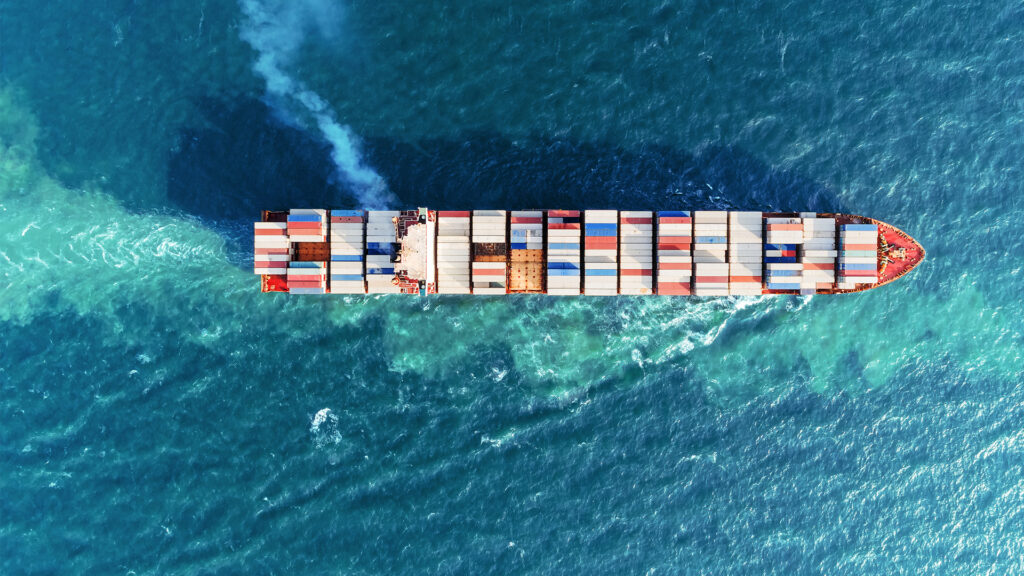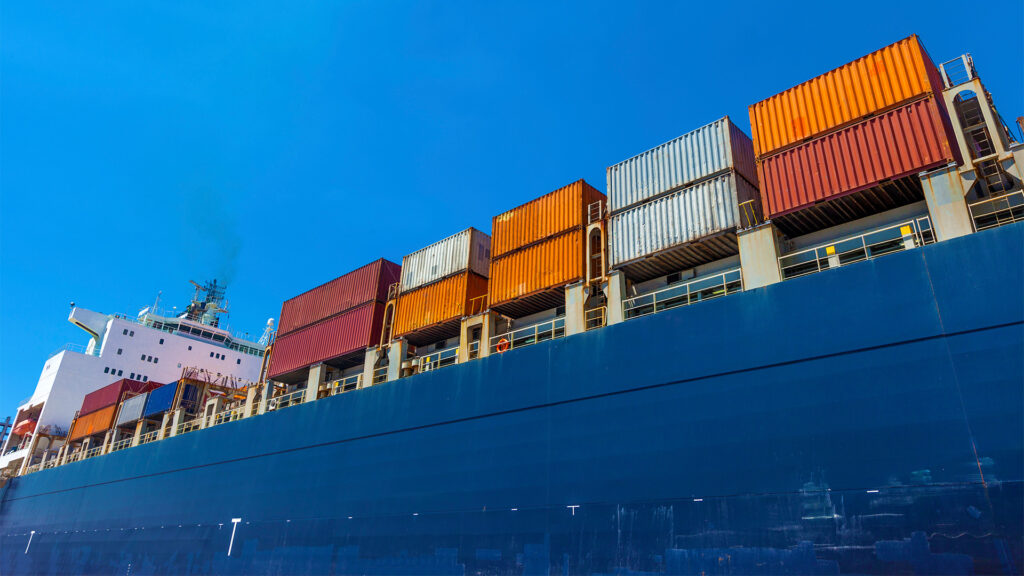2018 Yachts Market Briefing
With the 2018 Mediterranean yacht season fast closing and attention turning to the yacht shows and winter cruising grounds, we publish our latest market briefing covering a range of topical subjects from the transport of yachts, developments in Panama and US flagging, the threat of super storms, clarification of French social security law, our regular casualty focus and the implications of recent high profile casualties for the insurance market.
The dangers of transportation
September is a busy month in the yachting calendar with many yachts relocating to attend yacht shows or otherwise gearing up to leave the Mediterranean for winter sun elsewhere.
Many take advantage of the developed network of routes offered by the various heavy lift specialists.
There are distinct advantages to such services, including the rapid and generally safe relocation of a yacht without the need to retain a large crew for an ocean crossing, or risk the inevitable wear and tear of such crossings. However, we are seeing a regular flow of claims arising out of damage caused in transit.
Yachts are commonly floated or lifted onto a transport vessel. Whilst the bulky, irregular shape of yachts makes them a challenge to load by either method, damage is most likely to occur as a result of the lifting and/or lashing of a yacht.
Yachts are not commonly designed to be lifted or lashed onto a moving deck. Frequently yachts are not designed with sufficient numbers of load bearing or lashing points and those available can lack sufficient strength. Often, mooring cleats or deck fixtures are used as alternate lashing points and this can result in these fixtures being ripped out or left misshapen.
The lack of a coherent approach to the design of such things adds to the confusion. The mooring cleats of yachts of less than 24 metres should comply with ISO 15084:2003, whereas yachts over 24 metres have such arrangements specified by their Classification Society and ISO 13713:2012. Transport providers commonly carrya diverse range of yachts and are unlikely to perform detailed loading calculations for each different type, meaning that the risk of overloading deck fixtures is high. For a high-value yacht, even minor damage to fittings will incur a large repair bill and in serious cases (such as where the yacht is dropped during lifting) the damage may never be fully reparable.
RSA have estimated that total yacht losses suffered in transit could account for $100m annually, with the largest financial losses caused by yachts being lost overboard in bad weather.1
There is likely to be little room for a contractual claim against the carrier or its agent in the event of damage being done to a yacht in loading or transit. Rather, any claim will generally be made under the carrier’s insurance. There is commonly an assumption that the insurer will pay but this is not always the case and, even where the insurer does pay, such payment may not include compensation for the inconvenience or loss of use or enjoyment in the yacht while it is repaired. Therefore, anyone procuring the transportation of a yacht is advised to make their own arrangements to minimise the risk of damage in loading and/or transit by:
- stowing and securing all loose gear and external accessories;
- establishing and fixing their yacht’s centre of gravity and gross weight;
- establishing the whereabouts of their yacht’s lifting points and their capacity;
- specifying the use of elasticised non-rigid lashings, which will absorb the transport vessel’s energy when in motion;
- following industry guidelines2; and
- where possible, using semi submersible yacht transport and thereby allowing for the floating rather than lifting of their yacht.
Panama sets its sights on yachting
The Panama Maritime Authority (the PMA) has for many years been one of the largest shipping registries in the world but for a number of reasons it has never had much of a presence in the yachting industry. That may be about to change. Following concerted lobbying in Panama, the PMA announced on 18 September 2018 that it will be adopting the Red Ensign Group Yacht Code with effect from 1 January 2019. It will be accepting the registration of commercial vessels under both Parts A and B of the Code.
Registration fees are likely to be competitive and though it remains to be seen how the PMA will interpret the Code, it is likely to be commercial and pragmatic in its approach. This announcement brings much needed clarity to the registration of commercial yachts in Panama and indeed may in time become a popular choice for the registration of commercial yachts in much the same way as a registration in the Marshall Islands has.
Whilst not an experienced yacht registry, the Panamanian registry has been running since 1917, has about 22% of the world’s commercial fleet on its books and, as an ‘open registry’, has very limited restrictions on ownership. It has a global network of approved surveyors and the filing and issuing of documents with it is undertaken through a network of Panamanian Consulates, thereby making it accessible to the yachting industry.
With its long experience of maritime matters, extensive cruising grounds and prime location in the Americas, Panama has a vision of becoming a major hub for yachting in the region and this development marks the first step in that direction.
Super storms pose future challenges for yacht market
Natural catastrophes (e.g. storms, floods, earthquakes etc.) are now ranked as the number one risk to marine and shipping, advancing from the fourth greatest risk in 2017. In 2017 alone, 34% of losses in the market were due to natural catastrophe.
Following hurricanes Harvey and Irma, there were some 63,000 vessels damaged in the US at an estimated cost of $655 million. Such storms (and the resulting financial impact) has prompted debate within the marine insurance market about the insurability of pleasure craft in certain regions during hurricane season. We are yet to have confirmation of the level of marine losses caused by the recent hurricane Florence but it is certain to further intensify such debate.
It is likely the insurance market will reconsider the adequacy of their premiums for pleasure craft in hurricane regions and how the risks can be sufficiently covered in the future. It is likely the insurance market will reconsider the adequacy of their premiums for pleasure craft in hurricane regions and how the risks can be sufficiently covered in the future.
ENIM registration for seafarers resident in France
Under French law all seafarers resident in France must be registered with ENIM (the French social security body for seafarers) unless they are employed on board vessels flying non EU/EEA flags or otherwise registered in a country with a bilateral social security convention in place with France (see: https://www.cleiss.fr/docs/textes/index.html for a full list of such countries).
Following pressure from the yachting industry, article L5551-1 of the French Code des transports was amended in January 2018 and now provides that seafarers resident in France and working on board vessels registered outside of France may remain registered with another social security system, provided that, the protection offered by such alternative system is equivalent to the protection offered by the French social security system. However, the revised law still gave concern and in June 2018 ENIM released a clarifying instruction (see: (http://www.enim.eu/sites/default/files/fichiers_attaches/precisions_application_l5551-1_du_code_des_transports_fr.pdf) confirming the following:
- Residency in French territory: a seafarer will be regarded as resident in France if he/she lives in French territory for more than 6 months in any 12 month period or, if living on board a vessel, that vessel remains in French waters for more than 6 months in any 12 month period. The 6 months may be a continuous period or a series of shorter periods amounting to 6 months.
- Equivalent protection: all risks listed in article L111-1 of the French social security code must be covered, including; health, maternity, paternity, disability, death/accidents at work, occupational diseases, retirement and family benefits. The legislation gives no indication of the type or level of cover to be procured. However, ENIM’s instruction makes clear that it should at least cover the seafarer’s medical costs and those of his/her family, together with compensation for the seafarer in case of permanent disability, retirement benefits, including reversion of the seafarer’s pension to his/her family and family benefits. Cover may come in the form of registration with a national social security scheme or private insurance. The seafarer may personally assume responsibility for such arrangements and take out the necessary cover, subject to there being no derogation of the owner’s liability under the Maritime Labour Convention 2006 (for example for medical or repatriation costs in case of sickness or injury on board)and any other applicable law.
- Vessels in refit or repair: Crew serving on board vessels undergoing repair, maintenance, or refit and therefore immobilised in a French shipyard for more than 6 months are not considered to be resident in France for the purposes of the legislation.
- Registration: ENIM wants to make the registration process easier. They have recently published the declaration form online in French (see: (http://www.enim.eu/sites/default/files/fichiers_attaches/af03_-_08_2018_0.pdf, which is also available for self employed seafarers at http://www.enim.eu/sites/default/files/fichiers_attaches/af04_-_08_2018_0.pdf) and will shortly publish the same, together with guidance in English.
For any further questions on this issue, please contact:
Stephanie Schweitzer
Partner, Paris
T +33 (0)1 44 94 31 64
Estephanie.schweitzer@hfw.com
US Flag now available for private yachts
The US’ National Defence Authorization Act (NDAA) has now been ratified, making it possible to register yachts over 300gt, as measured under U.S. rules for tonnage and measurement (roughly equivalent to 500gt as measured under the International Tonnage Convention, 1969, rules for tonnage and measurement) with the US flag.
Under previous US law, which had not been updated for many years) private recreational vessels of more than 300gt had to be inspected as though they were commercial vessels in order to sail under the US flag. It was impossible for most if not all private yachts to comply with the inspection requirements, which were designed for commercial merchant ships, due to their fundamental differences in construction. As a result, many US yacht owners had no choice but to flag yachts in the Cayman Islands, Jamaica and other yacht friendly open registries.
The US coastguard has one year to develop a US Large Yacht Code for US-registered yachts of 300gt or more. However, in the interim, a private yacht over 300gt can now be registered in the US under the standards of the Part A of the Red Ensign Group’s Yacht Code, provided the citizenship and other requirements for the yacht’s owner and crew are also met.
The US administration hopes that such a change in legislation will increase the number of large yachts being registered in the US and so result in: more yachts being permanently based in US waters, more US crew being engaged, and more repair and refit work being undertaken within the US.
2018 Hurricane Season Outlook
We continue to handle a number of claims left over from the 2017 hurricane season.
The market had anticipated another active hurricane season. However, whilst 2018 has already delivered a significant number of serious storms globally, the current hurricane outlook indicates that there is a 60% chance of a below-normal hurricane season, a 30% chance of near-normal hurricane season and a 10% chance of an above-normal hurricane season. Overall there is a 70% probability of between 4 and 7 hurricanes occurring during this year with only a maximum of 2 predicted to be ‘major’.
In part, the hurricane season is expected to be less active than usual due to the exceptionally cool sea surface temperatures which persisted this summer and which are expected to continue through the peak hurricane season. Additionally, the atmospheric circulation patterns are not, for several reasons, conducive to hurricane activity within the main development region.
Although this hurricane season is not expected to bring as much devastation as the 2017 hurricane season, it remains advisable for those responsible for yachts travelling to hurricane prone regions, to have in place contingency plans, policies and procedures on how to respond in the event that they find their yacht in the path of a serious storm.
Casualty focus
The recent spate of high profile yacht fires has once again thrown the question of yacht insurance into the limelight and may well result in increased premiums for all at renewal. It has also highlighted the very real exposure and danger posed by such incidents and the need for appropriate fire safety training and regular drills in a simulated fire situation to allow yacht crew and guests to prepare for and respond to these potentially catastrophic incidents.
In addition to training, there are other practical steps that a yacht crew can take to reduce risk and improve safety. For example, using thermal imaging cameras to help detect any guests or crew members that may be trapped in smoke filled decks or cabins and to detect the seat of a fire and therefore better focus their emergency response on that specific area.
HFW has been involved in a significant number of fire related yacht incidents and, in addition to our casualty response capability, we also offer advice on loss prevention, safety audits, ISM reviews and casualty response drills, working with owners, managers, captains and crew to help mitigate risk and ensure the safety of all those onboard.
Should you have any questions on any of the points raised in this briefing, please contact any member of HFW’s yacht team.
In the event of an emergency, please contact your usual contact at HFW or otherwise our 24 hour casualty response number: +44 020 7709 7702.
For more information see www.hfwyachts.com.
Alex Kemp
Partner, London
T +44 (0)20 7264 8432
E alex.kemp@hfw.com
Tom Walters
Partner, London
T +44 (0)20 7264 8285
E tom.walters@hfw.com
William Maclachlan
Senior Associate, London
T +44 (0)20 7264 8007
E william.maclachlan@hfw.com
Footnotes
- RSA Paper, Risks Associated with the carriage of yachts as deck cargo
- The IMO publication “Code of Practice for Cargo Stowage and Securing” is the industry reference on lashing systems.
HFW has over 550 lawyers working in offices across Australia, Asia, the Middle East, Europe and the Americas. We advise clients on legal issues in relation to all aspects of international commerce and we are regarded as one of the world’s leading shipping law firms. The expertise, experience and reputation earned in commercial shipping are carried into our yacht practice.
Comprehensively Yachts
Our yacht team has over 25 years experience of working in this intimate industry and our in-depth knowledge combined with our international reach ensures we are pre-eminent in the field. For more information on HFW’s yachting team and the services we offer, please see www.hfwyachts.com.













